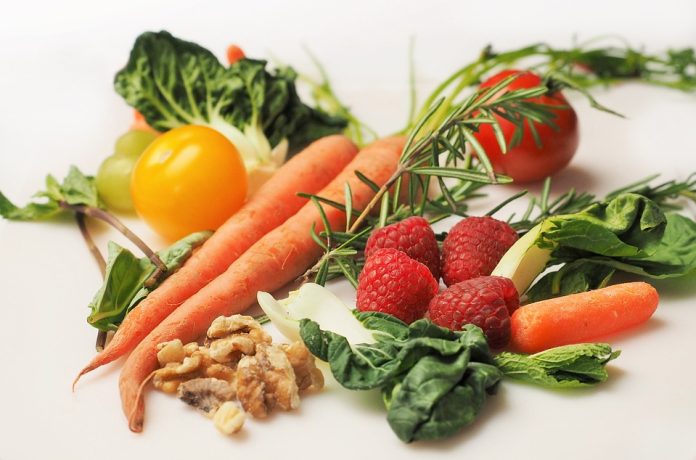[ad_1]
The Best Containers for Growing Vegetables Indoors
Growing vegetables indoors can be a great way to enjoy fresh produce year-round. With the right containers and setup, you can have a thriving indoor garden that produces delicious vegetables. But what are the best containers for growing vegetables indoors?
In this article, we’ll discuss the best containers for growing vegetables indoors. We’ll look at the different types of containers available, the pros and cons of each, and the best practices for growing vegetables indoors.
Types of Containers for Growing Vegetables Indoors
When it comes to growing vegetables indoors, there are a few different types of containers you can use. The most common types of containers for growing vegetables indoors are:
1. Plastic Containers
Plastic containers are the most common type of container for growing vegetables indoors. They are lightweight, inexpensive, and come in a variety of sizes and shapes. Plastic containers are also easy to clean and can be reused for multiple growing seasons.
The downside of plastic containers is that they can be prone to cracking and warping over time. They also don’t provide the best insulation for your plants, so you may need to add extra insulation to keep your plants warm.
2. Clay Pots
Clay pots are a classic choice for growing vegetables indoors. They are durable and provide good insulation for your plants. Clay pots also come in a variety of sizes and shapes, so you can find one that fits your space.
The downside of clay pots is that they can be heavy and difficult to move. They also tend to be more expensive than plastic containers.
3. Fabric Pots
Fabric pots are a newer type of container for growing vegetables indoors. They are lightweight, inexpensive, and come in a variety of sizes and shapes. Fabric pots also provide good insulation for your plants and allow for better drainage than plastic containers.
The downside of fabric pots is that they can be prone to tearing over time. They also don’t provide the best insulation for your plants, so you may need to add extra insulation to keep your plants warm.
4. Wooden Containers
Wooden containers are a great choice for growing vegetables indoors. They are durable, provide good insulation for your plants, and come in a variety of sizes and shapes. Wooden containers also look great and can add a rustic charm to your indoor garden.
The downside of wooden containers is that they can be expensive and difficult to move. They also require more maintenance than other types of containers, as they need to be treated with a sealant to prevent rot and decay.
Pros and Cons of Different Containers for Growing Vegetables Indoors
When choosing the best containers for growing vegetables indoors, it’s important to consider the pros and cons of each type of container. Here’s a quick overview of the pros and cons of the different types of containers for growing vegetables indoors:
1. Plastic Containers
Pros: Lightweight, inexpensive, easy to clean, and come in a variety of sizes and shapes.
Cons: Prone to cracking and warping over time, don’t provide the best insulation for your plants.
2. Clay Pots
Pros: Durable, provide good insulation for your plants, come in a variety of sizes and shapes.
Cons: Heavy and difficult to move, more expensive than plastic containers.
3. Fabric Pots
Pros: Lightweight, inexpensive, come in a variety of sizes and shapes, provide good insulation for your plants, allow for better drainage than plastic containers.
Cons: Prone to tearing over time, don’t provide the best insulation for your plants.
4. Wooden Containers
Pros: Durable, provide good insulation for your plants, come in a variety of sizes and shapes, look great, and can add a rustic charm to your indoor garden.
Cons: Expensive and difficult to move, require more maintenance than other types of containers.
Best Practices for Growing Vegetables Indoors
Once you’ve chosen the best containers for growing vegetables indoors, there are a few best practices you should follow to ensure your plants thrive. Here are some of the best practices for growing vegetables indoors:
1. Choose the Right Soil
The soil you use for your indoor garden is important for the health of your plants. Choose a soil that is well-draining and nutrient-rich. You can also add compost or other organic matter to the soil to improve its quality.
2. Provide Adequate Light
Your plants need adequate light to grow and thrive. If you don’t have access to natural sunlight, you can use grow lights to provide your plants with the light they need.
3. Water Regularly
Your plants need to be watered regularly to stay healthy. Make sure to check the soil regularly and water your plants when the soil is dry.
4. Fertilize Regularly
Fertilizing your plants regularly will help them grow and produce more vegetables. Choose a fertilizer that is specifically designed for indoor plants and follow the instructions on the package.
Conclusion
Growing vegetables indoors can be a great way to enjoy fresh produce year-round. With the right containers and setup, you can have a thriving indoor garden that produces delicious vegetables. The best containers for growing vegetables indoors are plastic containers, clay pots, fabric pots, and wooden containers. Each type of container has its own pros and cons, so it’s important to consider your needs before choosing the best container for your indoor garden. Following the best practices for growing vegetables indoors, such as choosing the right soil, providing adequate light, watering regularly, and fertilizing regularly, will help ensure your plants thrive.
[ad_2]

